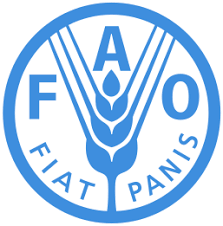The World Bank is a vital source of financial and technical assistance to developing countries around the world. We are not a bank in the ordinary sense but a unique partnership to reduce poverty and support development. The World Bank Group has two ambitious goals: End extreme poverty within a generation and boost shared prosperity.
- To end extreme poverty, the Bank's goal is to decrease the percentage of people living on less than $1.25 a day to no more than 3% by 2030.
- To promote shared prosperity, the goal is to promote income growth of the bottom 40% of the population in each country.
The World Bank Group comprises five institutions managed by their member countries.
The World Bank Group and Land: Working to protect the rights of existing land users and to help secure benefits for smallholder farmers
The World Bank (IBRD and IDA) interacts primarily with governments to increase agricultural productivity, strengthen land tenure policies and improve land governance. More than 90% of the World Bank’s agriculture portfolio focuses on the productivity and access to markets by small holder farmers. Ten percent of our projects focus on the governance of land tenure.
Similarly, investments by the International Finance Corporation (IFC), the World Bank Group’s private sector arm, including those in larger scale enterprises, overwhelmingly support smallholder farmers through improved access to finance, inputs and markets, and as direct suppliers. IFC invests in environmentally and socially sustainable private enterprises in all parts of the value chain (inputs such as irrigation and fertilizers, primary production, processing, transport and storage, traders, and risk management facilities including weather/crop insurance, warehouse financing, etc
For more information, visit the World Bank Group and land and food security (https://www.worldbank.org/en/topic/agriculture/brief/land-and-food-security1
Resources
Displaying 2071 - 2075 of 4907Urban Design Manual for Non-Motorized Transport-Friendly Neighborhoods
China is already the world's
largest emitter of greenhouse gases, and transport is the
fastest-growing source of these emissions. The international
energy agency estimates that carbon dioxide (CO2) emissions
from China's light-duty transport fleet will rise from
65 mega tones (MT) in 2005 to nearly 300 MT in 2020, an
increase of 290 percent. In addition to contributing to
global climate change, the rapid adoption of motor vehicles
Review of the Urban Transport Sector in the Russian Federation : Transition to Long-Term Sustainability
Russian cities are undergoing critical
economic and social changes that affect the performance and
condition of their urban transport systems. While the
population of most large cities in Russia (over one million
residents) has remained relatively unchanged over the last
decade, the average income of the urban dwellers has sharply
increased. The number of private cars per capita has
increased rapidly, generating a demand for urban mobility
Climate Change Impacts on Water Resources and Adaptation in the Rural Water Supply and Sanitation Sector in Nicaragua
Climate change is at the top of the
development agenda in Central America. This region, together
with the Caribbean, is highly vulnerable to the effects of
climate change in Latin America. Climate change is
manifesting itself through higher average temperatures and
more frequent droughts that result in higher water stress,
and through the rising frequency of extreme weather events
such as tropical storms, hurricanes, floods and landslides,
Market Accessibility and Regional Maps : Kyrgyz Republic
Access to markets is argued to have a
significant role in development. In order to quantify the
access of places to markets, policy makers are showing
increasing interest in accessibility indicators (Yoshida and
Deichmann 2009). This paper seeks to examine the spatial
relationship of access to market in the Kyrgyz Republic
using a recent census and household survey in order to
identify possible linkages with rates of poverty and other
VGGT: Contribution of the Land Governance Assessment Framework (LGAF) to integrating Voluntary Guidelines principles in country level action plans
The “Voluntary Guidelines on Responsible Governance of Tenure of Land, Fisheries, and Forests in the Context of National Food Security” (VGGT), endorsed by the Committee on World Food Security (CFS) in 2012, set out principles and internationally accepted standards for responsible practices and is the first comprehensive intergovernmental global instrument on tenure and its administration.







